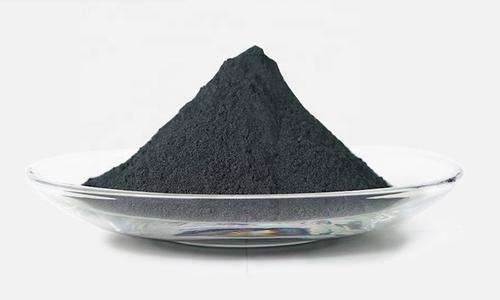Overview of tungsten disulfide
Tungsten disulfide is an inorganic compound with a molecular formula of WS2 and a molecular weight of 247.97. Tungsten disulfide is a small gray crystal or powder with a metallic luster, belonging to the hexagonal crystal system, semi-conducting and diamagnetic. The natural mineral is tungstenite. The layered structure is easy to dissociate and has similar lubricating properties to graphite. Used as a lubricant, such as for aerosols.

Physical and chemical properties of tungsten disulfide
Tungsten disulfide is a compound of tungsten and sulfur with the chemical formula WS2 and a molecular weight of 247.97. It is a black-gray powder. It appears as tungstenite in nature and is a dark gray orthorhombic crystalline solid. The relative density is 7.510.
Slightly soluble in cold water, soluble in hot water. It is insoluble in hydrochloric acid and alkali (except for the mixture of concentrated nitric acid and hydrofluoric acid). Soluble in molten alkali, insoluble in alcohol. The density is 7.6g·cm-3. It is reductive and can react with hot concentrated sulfuric acid, nitric acid, aqua regia, and other strong oxidants. It can be converted into WO3 by heating in air or oxygen. It is decomposed into tungsten and sulfur when heated to 1250°C in a vacuum. In a dry stream of pure nitrogen, the mixture of tungsten trisulfide and sulfur is heated to 900°C to sublime the excess sulfur, and the residue is tungsten disulfide.
Industrial use of tungsten disulfide
It can be used as a lubricant with better performance than molybdenum disulfide, lower friction coefficient, and higher compressive strength. Separately used for high temperature, high pressure, high speed, high load, and equipment operating in a chemically active medium. The forging and stamping lubricants configured with other materials can extend the life of the mold and improve the finish of the product. Filling materials configured with polytetrafluoroethylene and nylon can be used to make self-lubricating parts.
In addition, tungsten disulfide can also be used as a catalyst in the petrochemical industry. Its advantages are high cracking performance, stable and reliable catalytic activity, and long service life.
Lubrication advantages of tungsten disulfide
1. It has a very low friction coefficient (0.03), high extreme pressure resistance and oxidation resistance (starts to decompose at 450°C in the air, completely decomposes at 650°C, starts to decompose at 1100°C in a vacuum, and completely decomposes at 2000°C). It is suitable for lubrication under various harsh conditions such as high temperature, high pressure, high vacuum, high load, high speed, high radiation, strong corrosion, and ultra-low temperature.
2. It has good adsorption capacity on metal surfaces. It can be added to engineering plastics to make lubricating originals or evenly mixed with some volatile solvents and sprayed on the metal surface to improve the life of the die and the surface finish of the workpiece in the forging process.
3. Tungsten disulfide powder can be mixed with oils and greases to form tungsten disulfide oil, tungsten disulfide ointment, tungsten disulfide wax, and other solid lubricating blocks and lubricating films.
Ozbo.com (aka. Tanki New Materials Co.Ltd.) is a trusted global chemical material supplier & manufacturer with over 12 years of experience in providing super high-quality chemicals and Nanomaterials. As a leading nanotechnology development and product name manufacturer, Tanki New Materials Co.Ltd dominates the market. Our professional work team provides perfect solutions to help improve the efficiency of various industries, create value, and easily cope with various challenges. If you are looking for tungsten disulfide, please feel free to contact us.


